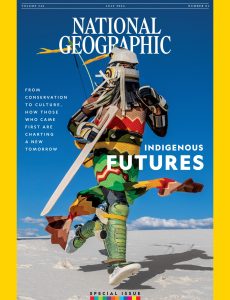
National Geographic USA – July 2024
English | 140 pages | pdf | 61.97 MB
One Of the things I love most about working at National Geographic Magazine is the continual learning. We spend our days looking into what is fueling new thinking in a wide variety of fields. It’s our hope that by staying on the leading edge, we in turn will provide you with stories that provoke thought and advance your own knowledge. Globally, Indigenous communities have always produced forward-looking models of innovation and sustainability, though these have often been overlooked. I became more acutely aware of this soon after I joined National Geographic in2022.We already had plans to publish a story,funded by the National Geographic Society and the Climate Pledge,from photographer Kiliii Yüyan, about the promising ways Indigenous peoples are leading conservation initiatives. But the more I immersed myself, the more I came to understand what Indigenous communities know: Their creative thinking extends well beyond conservation, into everything from language to film to fashion and art. And the idea for this special issue was born.
You’ll find three main types of features here: Five Stewardship stories, anchored by Yüyan’s photographs, showcase different ways Indigenous communities are protecting and preserving their environment and traditions. Culture pieces bring to life how they are driving progress, by leveraging inter generational teachings as well as new technology and tools. And
Voices stories put Indigenous creators and leaders front and center, examining how they and others are advancing our thinking. A note about the term Indigenous. In the issue we’re using the simplest and broadest definition: related to the original inhabitants of a certain geographic location.
There are many things I’m proud of in this issue, but first among them is that nearly all the content was produced by Indigenous contributors, many of them working with us for the first time. We, like many publications, have an imperfect record of covering Indigenous
cultures, and generally have done so from an outsider’s view. Bringing more Indigenous perspectives into National Geographic provides a new level of richness to the work, which we believe meaningfully deepens our collective knowledge and understanding.
I hope you enjoy the magazine issue.
FROM the EDITOR
Nathan Lump
Download from: